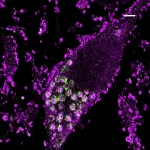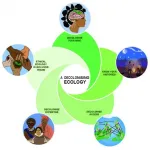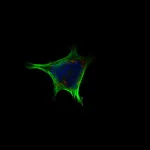(Press-News.org) ANN ARBOR, Mich. - Newborns who experience seizures after birth are at risk of developing long term chronic conditions, such as developmental delays, cerebral palsy or epilepsy.
Which is why all of these babies receive medication to treat the electrical brain disturbances right away.
While some babies only receive antiseizure medicine for a few days at the hospital, others are sent home with antiseizure medicine for months longer out of concern that seizures may reoccur.
But according to a new multicenter study, continuing this treatment after the neonatal seizures stop may not be necessary.
Babies who stayed on antiseizure medications after going home weren't any less likely to develop epilepsy or to have developmental delays than those who discontinued the medicines before leaving hospital, suggest findings in JAMA Neurology.
"There is wide variability in how different hospitals and physicians manage care for newborns with seizures," says senior author Renée Shellhaas, M.D., M.S., pediatric neurologist at University of Michigan C.S. Mott Children's Hospital.
Although neonatal seizures usually resolve within 72 hours, longer term medication is often prescribed out of caution, according to co-principal investigator and lead author for the study, Hannah C. Glass, MDCM, MAS.
"Our findings suggest that staying on antiseizure medication after leaving the hospital doesn't protect babies from continued seizures or prevent epilepsy and it does not change developmental outcomes," says Glass, a pediatric neurologist at the University of California, San Francisco Benioff Children's Hospital.
The study involved about 300 babies born at nine different centers over a three-year period who all developed seizures in their first days to weeks after birth. Two-thirds of babies stayed on medication after discharge from the hospital - averaging four months of treatment. But a third had antiseizure medicine discontinued before they went home - after just a few days of treatment.
Thirteen percent of babies developed epilepsy but there were no associations with medication duration.
Overmedication risks
Among the biggest concerns for longer term use of antiseizure medicine is that it may expose babies to potentially neurotoxic effects, which research indicates may be associated with lower cognitive scores.
The most commonly used medication for neonatal seizures is phenobarbital, which slows down brain activity but causes sedation.
Newborns who are prescribed this kind of medication for seizures may also have more trouble waking up to feed and engaging in other types of activities important to growth and development.
"We really need to balance the risks of continued medication with benefits to babies' health," Shellhaas says. "If it's not necessary, then keeping them on medicine could do more harm than good."
"Most of the babies in this study went home on antiseizure medications, which suggests we need to re-think standard practice," adds Glass. "We've never had such robust data from multiple centers to support this type of change for newborns with seizures."
Previous small, single-center studies have also suggested that early discontinuation of antiseizure medication isn't harmful.
More than 16,000 newborns in the U.S. experience neonatal seizures each year, with nearly half developing long-term health problems, according to nonprofit organization PCORI, which supported the new study.
Shellhaas, Glass and their colleagues will continue to follow this cohort of infants up to school age to assess development, including sensory processing, IQ and potential learning disabilities through research supported by the National Institutes of Health.
"We want to continue to track these children to watch for any subtle differences that may emerge over time," Shellhaas says.
"We hope this research will help drive decisions about caring for newborns with seizures and help us improve their outcomes over the course of their lives."
INFORMATION:
Study Cited: "'Safety of Early Discontinuation of Antiseizure Medication After Acute Symptomatic Neonatal Seizures," JAMA Neurology, Doi:10.1001/jamaneurol.2021.1437.
A new study by University of Liverpool ecologists warns that heat-induced male infertility will see some species succumb to the effects of climate change earlier than thought.
Currently, scientists are trying to predict where species will be lost due to climate change so they can plan effective conservation strategies. However, research on temperature tolerance has generally focused on the temperatures that are lethal to organisms, rather than the temperatures at which organisms can no longer breed.
Published in Nature Climate Change, the study of 43 fruit fly (Drosophila) species showed that in almost half of the species, males became sterile at lower than lethal temperatures. Importantly, the worldwide distribution ...
When a single gene in a cell is turned on or off, its resulting presence or absence can affect the function and survival of the cell. In a new study appearing May 24 in Nature Neuroscience, UCSF researchers have successfully catalogued this effect in the human neuron by separately toggling each of the 20,000 genes in the human genome.
In doing so, they've created a technique that can be employed for many different cell types, as well as a database where other researchers using the new technique can contribute similar knowledge, creating a picture of gene function in disease across the entire spectrum of human cells.
"This is the key next step in uncovering the mechanisms behind disease genes," said Martin Kampmann, PhD, associate professor, Institute ...
New research from Florida State University shows that concentrations of the toxic element mercury in rivers and fjords connected to the Greenland Ice Sheet are comparable to rivers in industrial China, an unexpected finding that is raising questions about the effects of glacial melting in an area that is a major exporter of seafood.
"There are surprisingly high levels of mercury in the glacier meltwaters we sampled in southwest Greenland," said FSU postdoctoral fellow Jon Hawkings. "And that's leading us to look now at a whole host of other questions such as how that mercury could potentially get into the food chain."
The study was published today in Nature Geoscience.
Initially, researchers sampled waters from three different ...
TALLAHASSEE, Fla. -- New research shows that concentrations of the toxic element mercury in rivers and fjords connected to the Greenland Ice Sheet are comparable to rivers in industrial China, an unexpected finding that is raising questions about the effects of glacial melting in an area that is a major exporter of seafood.
"There are surprisingly high levels of mercury in the glacier meltwaters we sampled in southwest Greenland," said Jon Hawkings, a postdoctoral researcher at Florida State University and and the German Research Centre for Geosciences. ...
Plants grown in soil are colonized by diverse microbes collectively known as the plant microbiota, which is essential for optimal plant growth in nature and protects the plant host from the harmful effects of pathogenic microorganisms and insects. However, in the face of an advanced plant immune system that has evolved to recognize microbial associated-molecular patterns (MAMPs) - conserved molecules within a microbial class - and mount an immune response, it is unknown how soil-dwelling microbes are able to colonize plant roots. Now, MPIPZ researchers led by Paul Schulze-Lefert, and researchers from the University of Carolina led by Jeffery L. Dangl show, in two separate studies, that a subset ...
Brain tumor cells with a certain common mutation reprogram invading immune cells. This leads to the paralysis of the body's immune defense against the tumor in the brain. Researchers from Heidelberg, Mannheim, and Freiburg discovered this mechanism and at the same time identified a way of reactivating the paralyzed immune system to fight the tumor. These results confirm that therapeutic vaccines or immunotherapies are more effective against brain tumors if active substances are simultaneously used to promote the suppressed immune system.
Diffuse gliomas are usually incurable brain tumors that spread in the brain and are difficult to completely remove by surgery. Chemotherapy and radiotherapy often only have a limited ...
Scientists and clinicians at UCL and Great Ormond Street Hospital (GOSH) studying the effectiveness of CAR T-cell therapies in children with leukaemia, have discovered a small sub-set of T-cells that are likely to play a key role in whether the treatment is successful.
Researchers say 'stem cell memory T-cells' appear critical in both destroying the cancer at the outset and for long term immune surveillance and exploiting this quality could improve the design and performance of CAR T therapies.
Explaining the study, published in Nature Cancer, lead author Dr Luca Biasco (UCL Great Ormond Street Institute of Child Health), said: "During clinical trials we have seen some very encouraging results in young patients with leukaemia, however it's still not clear why CAR T-cells continue ...
A population of bridled nailtail wallabies in Queensland has been brought back from the brink of extinction after conservation scientists led by UNSW Sydney successfully trialled an intervention technique never before used on land-based mammals.
Using a method known as 'headstarting', the researchers rounded up bridled nailtail wallabies under a certain size and placed them within a protected area where they could live until adulthood without the threat of their main predators - feral cats - before being released back into the wild.
In an article published today in Current Biology, the scientists describe how they decided on the strategy to protect only the juvenile wallabies from feral cats in Avocet Nature Refuge, ...
Knowledge systems outside of those sanctioned by Western universities have often been marginalised or simply not engaged with in many science disciplines, but there are multiple examples where Western scientists have claimed discoveries for knowledge that resident experts already knew and shared. This demonstrates not a lack of knowledge itself but rather that, for many scientists raised in Western society, little education concerning histories of systemic oppression has been by design. Western scientific knowledge has also been used to justify social and environmental control, including dispossessing colonised people of their ...
Our brain is usually well protected from uncontrolled influx of molecules from the periphery thanks to the blood-brain barrier, a physical seal of cells lining the blood vessel walls. The hypothalamus, however, is a notable exception to this rule. Characterized by "leaky" blood vessels, this region, located at the base of the brain, is exposed to a variety of circulating bioactive molecules. This anatomical feature also determines its function as a rheostat involved in the coordination of energy sensing and feeding behavior.
Several hormones and nutrients are known to influence the feeding neurocircuit in the hypothalamus. Classic examples are leptin and insulin, both involved in informing the brain of available energy. In the last years, the ...





